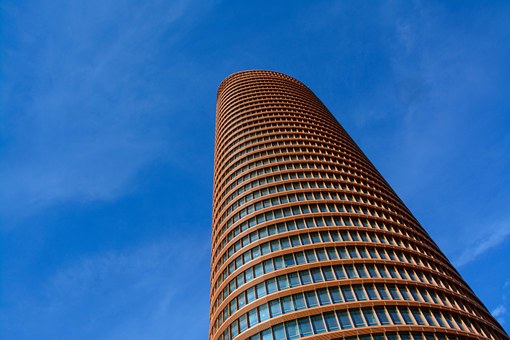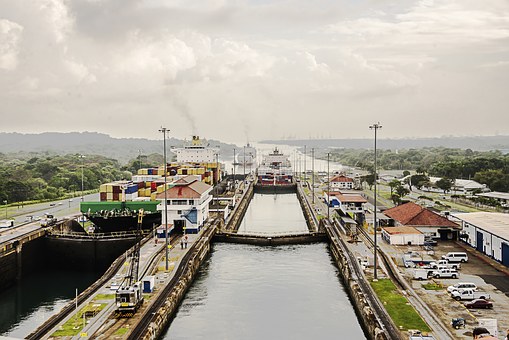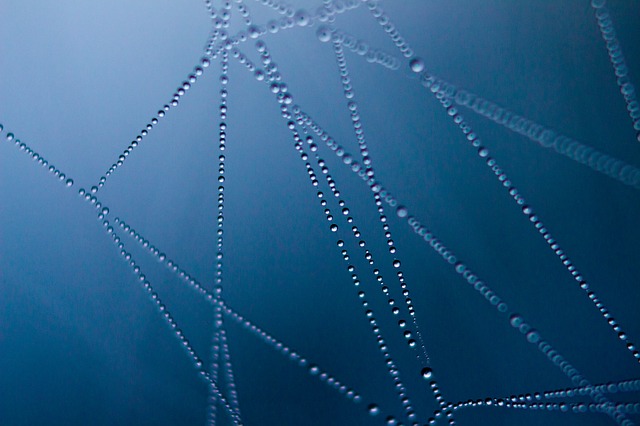Mark was a senior civil engineering building science major at the University of Southern California in the fall of 2005. He loves hanging out with his brothers in AGO and enjoys traveling, playing sports, and reading in his free time.
While architecture based on tension has been used since ancient times, almost every permanent structure in the world, until about 50 years ago, was based on compression loading. Beginning in the 1950’s, there was a renewed interest in tension structures led by the German architect Frei Otto. As a result of research performed by Otto and several of his contemporaries, the ideas that govern tension fabric structures were developed and implemented. Tension fabric has unique physical properties due to its basic structure that makes it an incredibly versatile building material. Its lightweight, translucent and reflective properties allow for energy and material conservation. It is therefore considered by many to be a form of sustainable architecture, architecture that meets the needs of today without compromising the ability of future generations to meet their own needs.
Introduction
Sometimes the most complex questions have the simplest answers. Consider the shape created by the soap film around a soap dish as it is quickly set down. While the soap bubble is incredibly fragile and will break almost immediately due to the nature of the material, the actual shape created is an example of a natural form using a minimum amount of materials very efficiently. This soap bubble shape was the missing link in the development of tension fabric structures. Prior to the discovery that shapes taken by soap bubbles, crystals, and microscopic plants can be utilized as possible forms for tension fabric architecture, it was impossible to create permanent large scale tension fabric structures able to withstand wind, snow, and gravity loads. However, due to this important discovery, not only could tension fabric be used as an effective roofing material for large spans, but its lightweight nature, translucent and reflective properties, and environmental adaptability could also be taken advantage of in building construction.
History of Tension Fabric Structures
The idea behind tension fabric structures has been around for as long as man has created structures for shelter. As the name suggests, tension fabric structures utilize fabric in complete tension, or the act of pulling apart, as a primary building material. The earliest and most frequently used example of this type of structure was tents. Historically tents have differed in building materials and methods of construction, depending on the climate in which they were constructed, ranging from the black tents of the Bedouins, Berbers, Moors, and Kurds to the highly evolved American tipi of the Native Americans [1].
On the whole however, most buildings prior to the twentieth century were based on compression loading, or the act of pushing together. Some notable examples of this compression architecture are the ancient Egyptian pyramids and the iconic Eiffel Tower of Paris. There were exceptions to this rule, such as the Golden Gate Bridge of San Francisco and other suspension bridges.
In the 1950s, architects and engineers began to take a renewed interest in using tension as the primary method of transferring loads in structures. Two main figures responsible for advancement in this investigation of tensile structures were Frei Otto and Horst Berger of Germany. Otto was a pioneer in tensile architecture who discovered natural forms such as soap bubbles and crystals created shapes that used a minimum amount of materials very efficiently. He then went on to make the connection that these forms could be used as possible shapes of perfect tension and therefore could be utilized in tensile architecture. However, without these shapes being defined mathematically, little further analysis and testing could be done without creating painstaking models out of soap. Berger was instrumental here. He discovered the mathematical relationship describing this soap bubble form. Since this discovery, tension fabric structures have begun to appear on the architectural landscape [1]. Some current well known structures utilizing tension fabric include the largest cable supported roof in the world of the Millennium Dome in London, England [2], and the Haj Terminal in Jeddah, Saudi Arabia, designed in part by Berger and currently one of the largest tensile structures in the world [1].
Tension Fabric Internal Structure
Currently, there are two main types of structural systems that involve tension fabric: air supported systems and tension membrane systems. Air supported systems utilize mechanical engineering to create a positive internal air pressure in order to support the fabric [3]. Tension membrane systems rely on cables or steel framing as a base support. Regardless of the base system, tension fabric roofs are able to provide durable protection over great distances with very little material. But how is this done? A look into the internal structure of the tension fabric and its associated properties will answer this question.
Fabrication of Base Fabric
There are three main types of tension fabric used in architectural applications today: PVC coated polyester, silicon coated fiberglass, and Teflon coated fiberglass. PVC coated polyester is the cheapest and easiest to manage of the three but also has the shortest life span. Teflon and silicon coated fiberglass are more durable, but are also more expensive [4]. However, the basic structure of the material is similar for all three. The bottom layer of the tension fabric is a base fabric, usually made out of polyester or fiberglass. This fabric is created with fibers that run perpendicular, or in the warp and welt directions, and are weaved in and out of each other. The base fabric is extremely important as it dictates a number of the final fabric properties including stress and strain properties (how much force the fabric can take and how long it can stretch before failure) [3]. The end result is an incredibly strong material: fiberglass fiber has a tensile strength of 3200 Mega-Pascal (MPa) [5]. To put this number in perspective, structural steel only has a tensile strength of roughly 250 MPa. In order to create a stronger final fabric, one could use a bigger denier (size) of fiber or create a fabric with more fibers per square inch [3]. In addition to the incredible strength of the base fabrics, they are also relatively translucent and reflective. For example, Teflon coated fiberglass has a reflectivity of seventy percent [5].
The Exterior Coating
Once the base fabric has been created all that is left to do is coat the fabric with an exterior coating. Generally, the exterior coating appears at the beginning of the name of a tension fabric: for example, Teflon coated fiberglass is coated with Teflon or Poly Tetra Fluoro Ethylene (PTFE) [5]. Teflon and silicon are durable coatings that guard against ultraviolet radiation, moisture, and microorganism infestation. They are ‘self cleaning’, meaning that dust, dirt, ash, and chemical pollutants all wash off in the presence of water [6]. The main difference between the two is that while Teflon is a better self cleaner, it is also more expensive to produce. PVC coating has many of the same properties as Teflon and silicon. However, it is susceptible to UV radiation and, consequently, has a shorter life span [4].
Important Application Criteria
But how is a fabric able to hold the wind, snow, and gravity loads associated with roofs? If the roof is only made out of fabric, why does the fabric not sink when weight is applied? The answer lies in the pre-stressing of the tension fabric and the final shape in which the tension fabric is placed.
Essential Pre-stressing
Pre-stressing refers to the process by which the fabric is loaded upon construction. To find the amount of pre-stressing necessary, the engineer must calculate the expected loads for the duration of the structure. The pre-stressing should account for the maximum possible load in both the X and Y directions throughout the course of the fabric. This amount of pre-stressing is very important. If the pre-stressing is too high, unnecessary building materials will be needed to counteract the large tension force created by the fabric. If it is too low, the structure will be vulnerable to vibrations caused by wind (Intents).
Form follows Function
While a two dimensional tension fabric membrane can take planar tensile forces, it can not take significant forces perpendicular to this plane. Therefore, in addition to being pre-stressed, tension fabric must take a certain three dimensional shape in order to remain stable. These shapes were discovered by Otto and Berger during their investigation of natural forms such as soap bubbles. There are two types of general shapes: anticlastic and synclastic shapes.
Anticlastic shapes are created by having the radii of the principal curvatures on opposite sides of the tension fabric surface. As a result, when loaded at a particular point, tension will increase on one curve of the membrane and leave the opposite curve, thereby preserving equilibrium and keeping the structure stable. In order to keep anticlastic shapes, some kind of structural frame or support is necessary in the form of cables or steel beams. Some examples of anticlastic shapes are saddle, cone, and wave forms [7] (Fig. 1)
On the other hand, synclastic shapes are characterized by having the radii of the principal curvatures on the same side of the fabric (Fig. 2). In order to counteract external forces, pressure from within is necessary. This is why synclastic shapes are associated with air inflated structures, as the difference of pressure created by air pumped into the building is able to counteract external forces in the form of wind or snow [7].
Implications of Fabric Tension Structures
The development of tension fabric, in connection with advancements in steel cable structural systems and mechanically induced air pressure, has led to its relatively recent incorporation into structures all over the world. Due to its internal structure, tension fabric has tremendous implications for the form, internal environment, and environmental adaptability for a particular structure.
Exterior Form and Aesthetics
As stated previously, the shape into which the tension fabric is placed is extremely important to its overall stability. The anticlastic and synclastic shapes needed for this stability pose exciting new possibilities for architects in the conceptual design phase and civil engineers in designing structural systems. In order to support the tension fabric in these fantastic shapes, a positive air pressure created by mechanical systems or a series of cables and structural steel must be utilized [3]. However, due to the extremely lightweight nature of the tension fabric, the cost of materials is greatly reduced from that of a conventional roof. For example, the Georgia Dome, which has a tension fabric roof spanning over 395,000 square feet, weighs only sixty-eight pounds [8]!
In addition, the actual color of a tension fabric roof adds an intriguing aesthetic to the exterior of the building. While fiberglass base fabrics are almost exclusively confined to a white color, polyester base fabrics can be a variety of colors [4]. Regardless, during the day a tension fabric roof is a solid color that can be seen from miles away. At night, the roof is transformed into a glowing beacon due to the interior lights of the building that shine through the translucent fiberglass or polyester [6].
The Interior
The translucency and reflectivity of the base fabric of tension fabric roofs have tremendous implications for the interior of their respective structures. The translucent tension fabric roof allows for very little necessary interior lighting during the day in order to illuminate the structure. It also lends itself to interior plant growth and greatly decreases the amount of glare generated from the sun. The reflective properties of these tension fabric roofs have similar positive effects on the interior. First of all, these roofs reflect much of the sun’s direct rays, thereby creating a cooler interior to the building [6]. For example, the temperature inside of the Haj Terminal will rarely rise above eighty degrees, even though the exterior temperature can top 120 degrees [9]. In addition, the highly reflective surface of tension fabric allows for more efficient lighting at night. The overall result of all these effects is a marked decrease in the amount of energy needed for the lighting and HVAC (heating, ventilation, and air conditioning) systems of the structure [6].
Environmental Observations
One of the most amazing properties of tension fabric is that it can be used effectively in almost any environment, ranging from the extreme heat of Saudi Arabia to the frigid cold of St. Paul, Minnesota. While it is often necessary to add a thermal lining or double layer of the fabric in colder climates, the material is surprisingly versatile [4]. In addition, tension fabric is considered a ‘limited combustible’ material. While it will catch on fire in the presence of a flame, this flame will die out as soon as the source is removed [3]. Finally, maintenance of tension fabric roofs is incredibly simple due to tension fabric’s self cleaning properties. All that is necessary to clean off any unwanted material is to rinse it off with water [6].
Conclusion
Despite its more extensive use over the past decade or so in architectural applications, tension fabric is still a relatively new building material. Discovering necessary forms and amount of pre-stressing can be extremely complex, sometimes only vaguely understood, and therefore much care is taken in designing structures involving this material. However, the advantages of tension fabric can not be disputed. It is an incredibly lightweight, material saving, energy conserving solution for roofing systems, especially over large areas. In short, it is an excellent option for architects and engineers looking to design sustainable structures.
References
[1] Red Sky Shelters. “The History of Tensile Architecture.” Red Sky Shelters. http://www.redskyshelters.com/tensilehistory.html.
[2] “Millennium Dome.” Midas User. http://www.midasuser.com/info/land/read.asp?index_id=4&pg=1&so=1&sk.
[3] Seaman Corporation. “Utilization of Vinyl Coated Polyester Fabrics for Architectural Applications.” Seaman Corporation. http://www.architecturalfabrics.com/whitepaper.html.
[4] N. Browne. “CPD.” Fabric Architecture and Signature Structures. http://www.fabricarchitecture.co.uk/cpd.htm.
[5] U. Gandhi. Design and Construction of Tension Membrane Structures. [2003]. http://homepages.cae.wisc.edu/~ukgandhi/documents/tensile%20structures_paper.pdf.
[6] Taiyo Birdair Corporation. “Custom Tension Structures.” Taiyo Birdair Corporation. http://www.taiyobirdair.com/index.php?submenu=ProdStructures&src=gendocs&link=Custom&category=ProductsServices&FREEDOMSITE=dc5026d72c982a0934f3e397a9e447d.
[7] Intents. “About Membranes” Technical. Intents. http://www.intents.be/default2.asp.
[8] “Georgia Dome.” Midas User. http://www.midasuser.com/info/land/read.asp?index_id=13.
[9] L. Babetski, E.Karp. H. Terminal, K. A. Aziz International Airport Jeddah Saudi Arabia.http://darkwing.uoregon.edu/~struct/resources/case_studies/case_studies_suspension/haj_terminal/haj_terminal.html.





